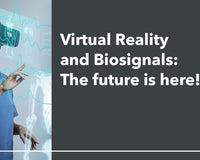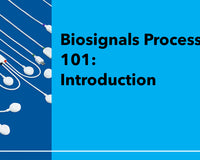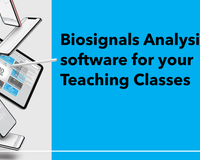How to develop biosignals based products
Working with biosignals is a challenging task, there are a number of key concerns that are shared by most of the researchers and developers. This article will share PLUX's approach to designing new products based on human biosignals! Stay tuned! 😃
1. Acessing Biosignals
Biosignals are time representations of changes in energy produced in the body. These changes correspond to energy variations of different origins, including electrical, chemical, mechanical, and thermal. Table 1 shows an example of each of these origin types, associated parameter changes, and examples of how to measure each.

Until recently, biosignals were mainly used in clinical settings for health monitoring, or in specialized research labs focused in fields such as the study of heart, muscle or the brain activity as addressed in classical texts of physiology.
As technology continued to develop enabling reduced size, weight, power, and cost, there has been a fast-paced growth in the number and type of biosensing technologies beyond the clinical and research lab settings. A direct consequence of this rapid expansion was the creation of an ever-expanding number of sports and health monitoring apps available in our smartphones that interact with biosignals captured from smartphones, smartwatches or other sensor devices. Biosignals are now accessible in multiple contexts through wearable technologies. Moreover, the fact that biosensing platforms are being used outside the clinical context is contributing to the adaptation of typical research techniques into new products and services.
PLUX has been working at the forefront of this frontier that requires knowledge of the scientific principles associated with biosignals and signal processing, allowing us to understand the specific user requirements for the new solutions empowered by smart sensing of biosignals in a unique way.

2. Design and development process
Design methodologies are core components to deliver effective products to the market, that integrate customer needs including scalable production with controlled costs.
Typical design thinking pipelines include five stages: empathy, definition, ideation, prototype and testing:
- Empathy - The first step consists of learning about the final users and the people who the design is meant to help.
- Definition - The definition step is when the designers develop and evaluate the point of view of the users’ needs and insights.
- Ideation - This is a brainstorming step, which entails proposal of various solutions in order to come up with something new. Then, a filter is applied in order to identify the solutions that meet some predefined
- Prototyping - The solutions that have been defined as the best alternatives in during the previous steps are prototyped to allow the designer to visualize and evaluate the solutions in the real
- Testing - The final stage is to test the solutions by evaluating users’ feedback in the new
Each of these steps may involve various techniques and are not fixed. The process iterates through the steps until a final solution is reached and, even then, the process may continue. In cases such as websites and products that allow continued collection of user feedback, designers are challenged to take that feedback into consideration in order to improve the current product, future versions of the current product, or future new products.
3. PLUX five-step approach works in the following order:
STEP 1 - In the first step the customer requirements and use cases are captured, with a focus on the intended use and on providing a clear view of the needs that design will need to address.
STEP 2 - The second step is an ideation step on the biosignals that can be used to address the use case, and the impacts that the use case will have on the wearable technology (e.g., correct location for body placement in order to access the intended biosignals and the impacts of the real-life utilization of the product).
STEP 3 - In step three the design phase moves into a more technical stage where the objective is to clean and extract data off-line in order to design the feature extraction algorithms that will enable a live product. For developing these intelligent algorithms, a thorough scientific review is needed, with machine learning techniques used to facilitate signal filtering and feature extraction.
STEP 4 - On step four, these intelligent algorithms are used in real-time situations, so that the final product can be adjusted for day-to-day living, and not be limited to post-hoc investigations.
STEP 5 - Finally, step five is a first early productization stage, where a first real-life prototype emerges, that addresses the intended use that was captured in step 1 with the full solution that was prepared for the design project.











